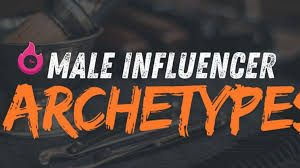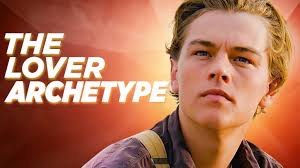In the ever-expanding world of social media, influencers have become powerful figures shaping consumer behavior, social trends, and even political discourse. Among these influencers, a distinct category has emerged—the male influencer archetype. Whether it’s through fashion, fitness, lifestyle, or technology content, these archetypes represent different expressions of modern masculinity, culture, and identity. But what exactly is a male influencer archetype, and why does it matter?

This article explores the definition, evolution, and cultural significance of the male influencer archetype and highlights key examples that have shaped online engagement today.
What Is a Male Influencer Archetype?
A male influencer archetype refers to a recurring character or persona commonly seen among male content creators in the influencer ecosystem. Much like archetypes in literature or psychology, these digital personas reflect specific traits, values, aesthetics, and behavioral patterns. They resonate with particular audience segments and influence how men express themselves in online spaces.
These archetypes are not just characters—they’re carefully curated identities that align with current social and cultural narratives. By adopting one or more of these archetypes, male influencers build communities, attract brand deals, and drive significant social engagement.
The Evolution of the Male Influencer Archetype
The rise of social media platforms like Instagram, TikTok, and YouTube has democratized fame. While the early days of influencer culture were dominated by female beauty and fashion bloggers, men have since carved out their own niches. Over time, certain recognizable male influencer archetypes have emerged across platforms, from edgy streetwear enthusiasts to motivational entrepreneurs.
These personas evolve alongside cultural trends. For instance, the traditional “alpha male” archetype popular in the early 2010s has given way to softer, more emotionally open versions of masculinity—represented by influencers who talk about mental health, relationships, and vulnerability.
Popular Male Influencer Archetypes
Let’s take a look at some of the most recognized male influencer archetypes today:
1. The Eboy
Perhaps the most visually distinct male influencer archetype, the Eboy is known for his alternative, emo-inspired fashion—black nail polish, layered silver chains, and a moody aesthetic. Popular on TikTok, this archetype blends nostalgia with rebellion, speaking to Gen Z audiences who seek individuality in a world of mass trends.
2. The Fitness Guru
This archetype dominates platforms like Instagram and YouTube. He posts workout routines, diet advice, and motivational quotes. More than just aesthetics, the modern fitness influencer often blends physical health with mental well-being, aiming to inspire others to live healthier lives.
3. The Tech Enthusiast
From unboxing the latest gadgets to breaking down complex topics like AI and cybersecurity, the tech influencer is another growing male influencer archetype. These creators provide value through knowledge, gaining trust and credibility among digital-native viewers.
4. The Entrepreneur Hustler
Always on the grind, this archetype shares business insights, startup journeys, and financial advice. Dressed in sharp outfits and often seen in co-working spaces or luxury cars, the entrepreneurial influencer appeals to ambitious, career-driven audiences.
5. The Aesthetic Minimalist
This male influencer archetype values simplicity and clean design. Whether it’s through neutral-toned outfits, minimalist interiors, or calm, ASMR-like content, this persona promotes peace and mindfulness in a chaotic world.
Cultural Impact of the Male Influencer Archetype
The influence of these archetypes goes far beyond likes and follows. They shape how masculinity is perceived and practiced by millions of men online. While traditional masculinity emphasized stoicism, dominance, and emotional detachment, the male influencer archetype offers a more nuanced picture.
Today’s male influencers are expanding what it means to “be a man” in public spaces. Whether they’re sharing skincare routines, discussing anxiety, or dancing to pop music, they’re breaking stereotypes and encouraging others to do the same.
Brands are also taking notice. Companies in fashion, wellness, tech, and lifestyle are now specifically targeting campaigns around these archetypes, recognizing their commercial power and cultural relevance.
Criticisms and Controversies
Despite their popularity, male influencer archetypes are not without criticism. One major concern is the authenticity of these personas. Because influencers rely heavily on algorithms and engagement metrics, some critics argue that many archetypes are performative rather than genuine.
Additionally, some archetypes can promote unrealistic standards—whether it’s the shredded fitness body or the ultra-wealthy entrepreneur lifestyle. These portrayals can fuel insecurities, especially among younger audiences.
The challenge, then, is for influencers and audiences alike to differentiate between curated identity and real life. The more transparent influencers are about their journeys and struggles, the more relatable and grounded they become.
How Brands Leverage the Male Influencer Archetype
Marketing teams now actively profile male influencer archetypes when planning digital campaigns. Here’s how brands benefit:
- Precision Targeting: Archetypes help brands match their products with the right personality types for niche engagement.
- Content Alignment: Influencers whose values align with brand messaging can create more authentic promotions.
- Influence Multiplier: These personas often hold sway across multiple platforms, maximizing visibility and reach.
Whether it’s a streetwear brand collaborating with an Eboy or a financial startup partnering with an entrepreneur influencer, the synergy can lead to viral results.
Future of the Male Influencer Archetype
As society becomes more inclusive and values shift, so too will the nature of the male influencer archetype. We’re already seeing more diversity in body types, ethnic backgrounds, sexual orientations, and perspectives among male influencers. This diversification is a positive step toward a more representative online world.
In the future, expect to see new archetypes emerge—perhaps around eco-conscious living, digital privacy, or neurodiversity advocacy. These emerging personas will likely blend storytelling, activism, and aesthetics in new ways.
Conclusion
The male influencer archetype has become a powerful force in shaping digital culture and modern masculinity. From fashion-forward Eb0ys to financially savvy entrepreneurs, these personas help define how millions of men present themselves online and interact with the world.
While there are valid concerns about authenticity and representation, the growth of these archetypes also signals a broader cultural shift—one that embraces diversity, emotional expression, and individuality. Whether you’re a marketer, a creator, or simply an observer of digital trends, understanding the male influencer archetype is essential for navigating today’s online landscape.
FAQs
What is a male influencer archetype?
It refers to common, recognizable personas among male social media influencers, defined by style, content, values, and audience appeal.
Why are influencer archetypes important?
They help marketers target content more effectively and help audiences find relatable creators who reflect their interests and values.
Is the Eboy an example of a male influencer archetype?
Yes, the Eboy is a popular archetype among Gen Z audiences, known for edgy fashion and emotional expression.
Do these archetypes change over time?
Absolutely. As social trends evolve, so do the archetypes that define online masculinity and influence.
Can someone belong to multiple archetypes?
Yes. Many influencers blend traits from various archetypes to create a unique and flexible personal brand.




